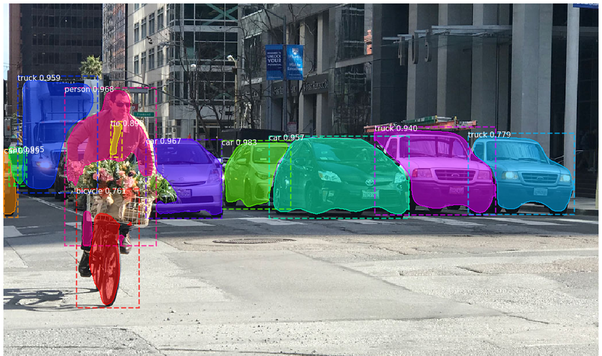The segmentation in image is used for object recognition, occlusion boundary estimation within motion or stereo systems, image compression, image editing, or image database look-up. The main motive of image segmentation is to cluster pixels into salient image regions, i.e., regions corresponding to individual surfaces, objects, or natural parts of objects.
What is Segmentation?
Image segmentation is the process of dividing an image into different regions based on the characteristics of pixels to identify objects or boundaries to simplify an image and more efficiently analyze it. It is typically used to locate objects and boundaries in images to make it recognizable to machine learning based AI models that need more precise detection of objects in various scenarios.
Image segmentation is also used to track objects in a sequence of images and to classify terrains, like petroleum reserves, in satellite images. Some medical imaging applications of segmentation include the identification of injured muscle, the measurement of bone and tissue, and the detection of suspicious structures to aid radiologists while detection such alignments.
IMAGE SEGMENTATION APPLICATIONS
Image segmentation helps define the relations between objects, as well as the context of objects in an image. The applications include number plate identification, face recognition, and satellite image analysis. Industries like retail and fashion use image segmentation, for example, in image-based searches. While self-driving cars use it to understand their surroundings.

Objects Detection & Face Recognition
The most important applications of image segmentation involves identifying the objects of a specific class in the digital image. Semantic objects can be classified into classes like human faces, cars, buildings, or animals in the single class.
Face detection: While detecting the object-class with many applications, including biometrics and autofocus features in the digital cameras. The machine leaning algorithms detect and verify the presence of the facial features in different types of human faces.
Medical Imaging: For precise image detection, segmentation plays a crucial role in medical imaging data. For an instance, radiologist may use machine learning to augment analysis, by segmenting an image different organs, tissue types, or disease symptoms reducing the diagnostic time.
Objects Tracking Moving Objects in Videos
Another application of image segmentation is locating the moving object in video footage. Mainly used in security and surveillance, traffic control, human-computer interaction, and video editing.
Autonomous Vehicles: Self-driving cars need to perceive and understand their environment in order to drive safely. The relevant classes of objects visible outside like other vehicles, buildings, and pedestrians. Semantic segmentation enables self-driving cars to recognize which areas in an image are safe to drive.
Face & Iris Recognition: To identify an individual in a frame from a video source segmentation is used. This iris technology compares selected facial features from an input image with faces in a database helps to recognize the right person through their face and retina scan in the human eyes.
Image Recognition in Retail
Apart from autonomous vehicles and medical imaging, image segmentation is used in retail industry with an understanding of the layout of goods on the shelf. It helps algorithms process product data on the real time basis to detect whether goods are present or absent on the shelf. If a product is absent, they can identify the cause, inform the merchandiser, and also alert the corresponding part of the supply chain.
Cogito offers world-class image annotation services to provide the best quality training data sets for machine learning or deep learning based AI projects. It is also offering semantic segmentation image annotation to annotate the varied objects visible in the different scenarios. Working with highly experienced annotators, it can produce large volume datasets with flexibility and turnaround time.
sprunki horror Endless Fun Awaits!



